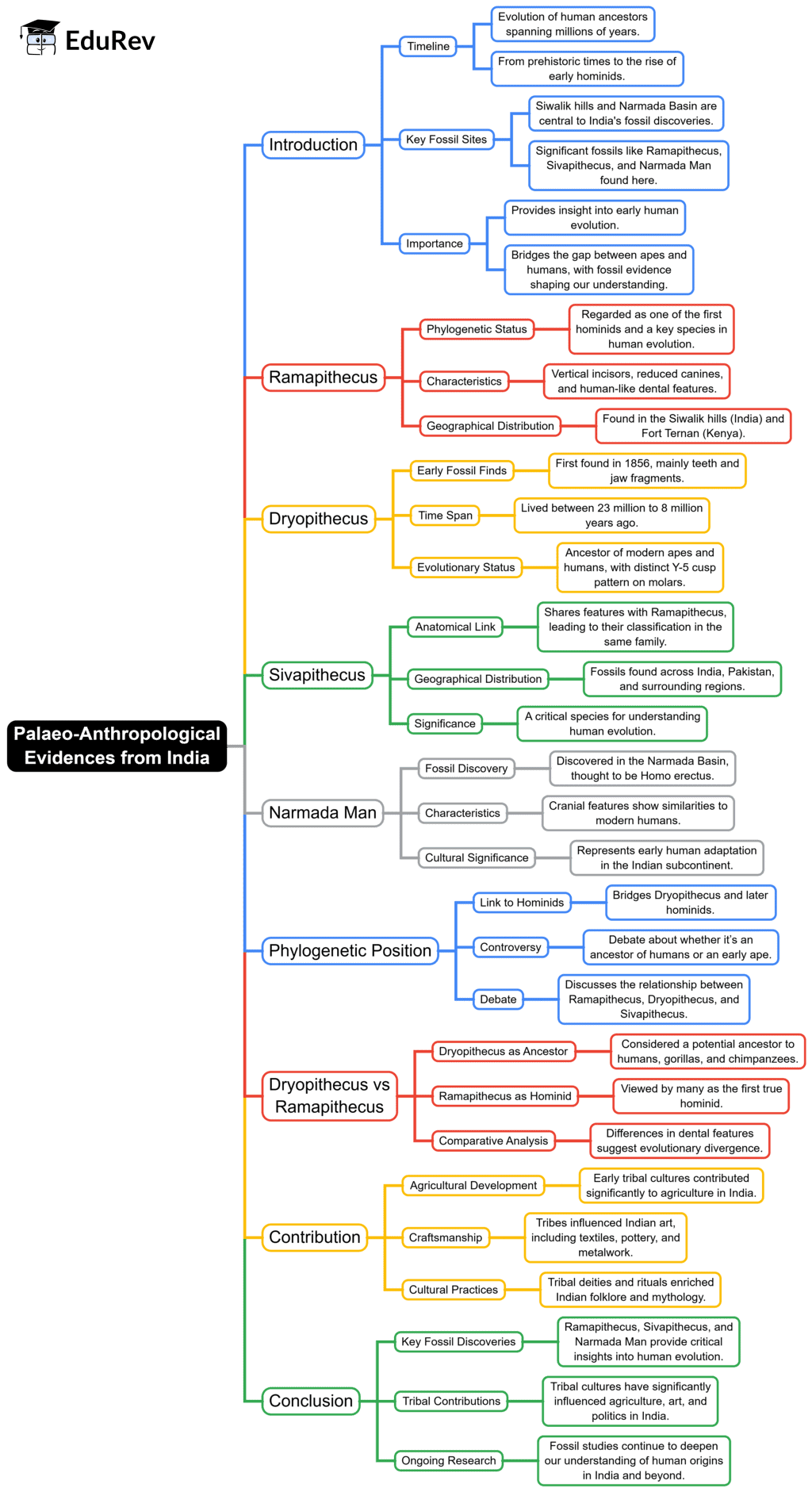UPSC Exam > UPSC Notes > Anthropology Optional for UPSC > Mind Map: Palaeo Anthropology Evidence
Mind Map: Palaeo Anthropology Evidence | Anthropology Optional for UPSC PDF Download

The document Mind Map: Palaeo Anthropology Evidence | Anthropology Optional for UPSC is a part of the UPSC Course Anthropology Optional for UPSC.
All you need of UPSC at this link: UPSC
|
209 videos|299 docs
|
FAQs on Mind Map: Palaeo Anthropology Evidence - Anthropology Optional for UPSC
| 1. What is Palaeoanthropology and why is it important for understanding human evolution? |  |
Ans. Palaeoanthropology is the scientific study of ancient human species and their ancestors, using fossil evidence and archaeological findings. It is important for understanding human evolution as it provides insights into how early humans lived, adapted, and evolved over millions of years, helping us to trace the development of physical and behavioral traits that characterize modern humans.
| 2. What types of evidence do palaeoanthropologists rely on to study ancient human species? |  |
Ans. Palaeoanthropologists rely on a variety of evidence, including fossil remains, stone tools, and archaeological sites. Fossil evidence includes bones and teeth that can reveal information about the physical characteristics and health of ancient humans. Stone tools provide insights into the technological advancements and cultural practices of early humans, while archaeological sites help reconstruct their environments and lifestyles.
| 3. How do fossils contribute to our understanding of the migration patterns of early humans? |  |
Ans. Fossils contribute to our understanding of migration patterns by providing data on where ancient humans lived and the geographical distribution of their remains. By analyzing the age and location of fossils, scientists can track the movements of early human populations, such as the migration out of Africa, and understand how environmental changes influenced these patterns.
| 4. What are some significant discoveries in Palaeoanthropology that have shaped our understanding of human evolution? |  |
Ans. Significant discoveries in Palaeoanthropology include the finding of "Lucy," a 3.2-million-year-old Australopithecus afarensis skeleton, which provided evidence of bipedalism. The discovery of Homo naledi in South Africa revealed the complexity of human evolution, and the unearthing of Neanderthal remains in Europe highlighted the interactions between different human species, including interbreeding with modern humans.
| 5. How does Palaeoanthropology intersect with other scientific disciplines? |  |
Ans. Palaeoanthropology intersects with various scientific disciplines such as genetics, geology, and archaeology. Genetic studies help trace lineage and evolutionary relationships among species, while geological methods assist in dating fossils and understanding the environmental context. Archaeology complements palaeoanthropology by providing insights into the cultural aspects of ancient human life through artifacts and settlement patterns.
Related Searches
















